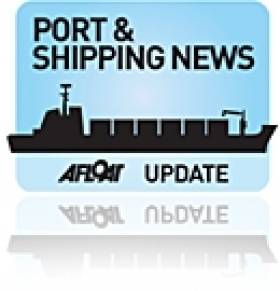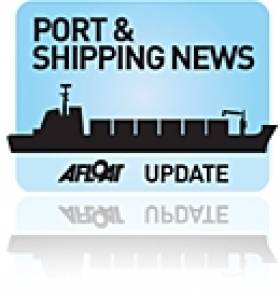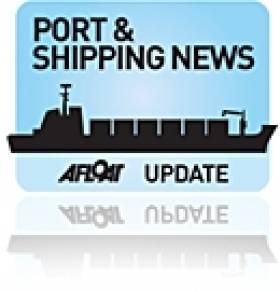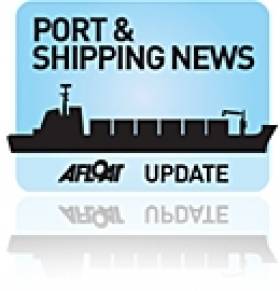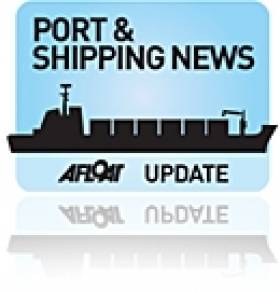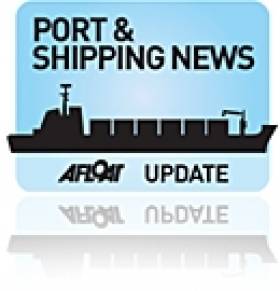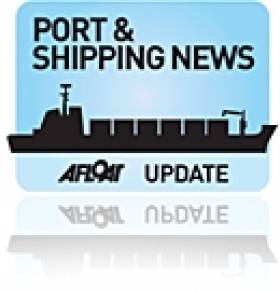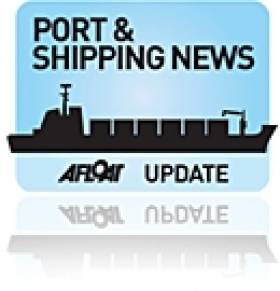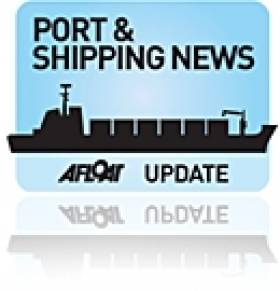Displaying items by tag: Port and Shipping News
EU Commission Adopts Action Plan to Improve Customs Risk Management
#EUCustomsPlan - The European Commission has adopted a new strategy detailing an action plan to improve customs risk management.
The new strategy launched last week is intended to supervise and identify supply chain risks, and key priorities where action is needed in order to achieve more effective and efficient EU-wide customs risk management.
Each priority in turn is developed in the action plan, in terms of actions to be taken and deliverables to be achieved.
Furthermore, the strategy seeks to ensure that customs is more coherent, efficient and cost effective in a way that reflects today's realities.
The action plan sets out specific measures to achieve this, together with the actors responsible and clear deadlines for doing so.
The main priorities in the strategy and action plan for improving customs risk management are:
Efficient controls and risk-mitigation
Data quality (IT systems for processing entry summary declarations)
Information sharing
Interagency cooperation
Cooperation with traders
Capacity building
International customs cooperation
The Commission, Member States and economic operators will all have an important and clearly defined role to play in ensuring the successful implementation of the new strategy.
Ports & Shipping Review: Greenore Port for Sale, Irish Port Volumes Rise 2%, Italian Ro-Ro on African Service Reflects International Trade
#Ports&ShippingReview: Over the last fortnight, Jehan Ashmore has reported on the shipping scene, where Dublin Port Company and investment company One51 are to sale Greenore Port.
It further transpired that the strategic port on the shores of Carlingford Lough drew the attention of the Burke Shipping Group, as a bidder in the final stages for the Co Louth port.
The Irish ports and shipping sectors saw a 2% rise in volumes in the Q2 of 2014 when compared to same period in 2013. The latest quarterly results from iShips Index were published by the IMDO.
An example of international shipping trading to Irish ports was the 57,000 tonnes Italian operated ro-ro multi-purpose Grande Atlantico. She anchored in Dublin Bay fresh from an overhaul prior to resuming her Northern Europe-West African 'liner' service.
Irish Institute of Master Mariners to Host Gala Dinner at Inaugural Irish Maritime Forum
#ForumGalaDinner - The Irish Institute of Master Mariners (IIMM) has posted details on their website of their members Annual Marine Ball which will be replaced this year instead by a Gala Dinner to be held at Cork City Hall on Friday 26th September.
The change of the annual event is to facilitate the Gala Dinner in conjunction with the previously reported inaugural Irish Maritime Forum held on the same day in Cork City Hall in which the IIMM is supporting.
Members tickets for the Gala Dinner cost €65 per person and can be purchased by registering online through the IIMM's website HERE and by ticking the box for Gala Dinner. Accommodation can also be booked through the website at registration and for accommodation there is a choice of the Clarion or Gresham Metropole Hotels.
The theme of the forum hosted by the Port of Cork Company is 'Developing the Dynamic Future for Ireland's Maritime Sector' which is to focus on exploring the future of the maritime sector within Ireland. Also to be examined more closely are the challenges and opportunities faced by many within the sector.
In addition to a welcoming address by an Irish Government Minister, there will be lunch and a partner's programme organised. Delegates interested in attending the Irish Maritime Forum 2014 (and exhibition) are asked to register by visiting: www.irishmaritimeforum.ie
#GrandeShip - Almost 57,000 tonnes, the impressive Grande Atlantico (as pictured), a vehicle-carrier fresh from dry-docking in the UK, remains anchored in Dublin Bay offshore of the popular Forty Foot bathing place, writes Jehan Ashmore.
Since her arrival last weekend, the multipurpose ro-ro vessel capable of handling 3,515 cars and more than 1,300 containers had been in drydock for a period of one month having undergone maintenance at A&P Falmouth, Cornwall.
Grande Atlantrico measures 214m length X 32m beam X 9.6m draught. She is a 'Grande Class 1' series vessel operated by Italian shipping giant, Grimaldi Lines. The Naples based group, has one of the world's largest fleet of ro-ro, combination ro-ro's carriers in addition to operating ferries in the Mediterranean.
Having anchored less than 2 nautical miles offshore of Sandycove, the appearance of the 1999 built vessel is an unusual sight in Dublin Bay, as normally she and her fleetmates are scheduled to make arrival and departures into Dublin Port during night-time operations.
She is to berth in the port this evening at Alexandra Basin west from where her large stern door will be lowered onto the quayside so to discharge and take on board cargo.
The Gibraltar registered Grande Atlantico operates the 'Grimaldi Central Express Service' which involves calling to Hamburg, Germany and Antwerp Belgium and ports in the following West African countries, Benin, Togo, Nigeria and Ghana.
Following her Dublin departure around midnight, Grande Atlantico is scheduled to reach her final port of call, Tema in Ghana in mid-September.
Grimaldi Lines only began operations to Dublin in 2012, though the shipping company's distinctive yellow hulled ships have been serving Cork Harbour for many years using Ringaskiddy's deepwater berth.
Burke Shipping Group Bids for Greenore Port
#GreenorePort – The Irish Times reports that the Burke Shipping Group, has emerged as a bidder in the final stages of the race for Greenore port in Co Louth.
It is one of three remaining bidders for the port, which as previously reported is jointly owned by the investment company One51 and the State-owned Dublin Port Company.
Warrenpoint Harbour, which recently announced its pre-tax profit doubled to £850,000 (€1.07 million) in 2013, is also among the final bidders for the port. The third bidder is believed to be a family-owned company with interests in transport.
Greenore is strategically located next to the Dublin-Belfast economic corridor, so it is capable of servicing both cities, meaning its new owner will be watched out for closely by Irish exporters.
For much more on this story click HERE.
Dublin Port and One51 to Sell Greenore Port
#GreenorePort – Today's Irish Times reports that State-owned Dublin Port Company and investment company One51 are on the brink of selling Greenore Port in Co. Louth to a new owner for a figure in the low single-digit millions.
The sale of the strategically located port on Carlingford Lough is being handled by IBI Corporate Finance, which is in the final stages of closing the sale of the port.
The port is owned equally by Dublin Port Company and One51 via a company called Renore Ltd, which was set up to acquire the operations of the port in April 2002. To read more of this development, click the article Here.
Ports & Shipping Review: Port of Cork Turnover Up, Cruise Boost for Donegal, Warrenpoint On the Rise and Arklow 'Greens' Dock
#Ports&ShippingReview: Over the last fortnight, Jehan Ashmore has reported from the shipping scene, where the Port of Cork's turnover increased by over 6% in 2013.
The Inishowen Peninsula in Co. Donegal is set to cash in on the lucrative cruise ship sector following investment to upgrade facilities at Greencastle Harbour.
Warrenpoint Port is on its way to economic recovery as a rise in trading activity saw the Co. Down port record a doubling of pre-tax profits to around £850,000 in 2013.
The port on Carlingford Lough welcomed Saga Pearl II, the first ever cruise ship last month and in October the port is to host the 2014 British Ports Association Conference.
Arklow Bank the leadship of six 'B' class 'greener' newbuilds of the Arklow Shipping fleet called to Dublin Port this week. She departed last night laden with a cargo from the Boliden Tara Mines terminal and is bound for Odda, Norway.
Arklow’s Newest & Greenest Newbuilds Dock in Irish Ports
#ArklowGreens - Arklow Bank, leadship of six 'B' class newbuild general cargoships (4,800dwt) of the Arklow Shipping fleet is berthed at the Boliden Jetty mineral terminal in Dublin Port, writes Jehan Ashmore.
The newbuild has 'greener' hull design credentials and along with her sisters flies the Dutch flag for Arklow Shipping Netherland B.V. As previously reported, her launch earlier this year was from Ferus Smit's Dutch shipyard at Westerbroek.
The B class dispense the use of a bulbous bow and instead is replaced with a straight-stem bow shape which brings a number of 'environmental' advantages. This allows the 119m hulled newbuilds which have sharper waterlines to have reduced resistance irrespective of loading draft.
Earlier this week Arklow Bank arrived from Coruna, northern Spain to the 'Coal' berth where scrap-metal is one of the trading activities that occupy this quayside. In recent days she shifted to load at Boliden (formerly Tara Mines) zinc loading terminal in Alexandra Basin and is expected to depart today.
Another sister, Arklow Bay which was launched in March (following Arklow Beach) became the largest ever vessel to trade to Drogheda Port last month. She too arrived from a Spanish port, Garrucha carrying a cargo of gypsum for Irish Cement's Platin plant facility.
UK Ports Conference Heads for Warrenpoint Port
#UKportConference – Warrenpoint Port is to host the British Ports Association's 2014 conference on the 1 and 2 October.
This is only the second time in the 22 year history of the BPA that a venue has been held in Northern Ireland.
As reported yesterday on Afloat.ie, the Co. Down port is experiencing an upturn in trade in addition to welcoming the first cruiseship caller to the scenic setting of Carlingford Lough.
The flagship industry event is expected to attract approximately 200 delegates including BPA Members and Non Members, industry partners and key stakeholders.
It provides the main opportunity for the industry to discuss all the latest policy, practice, trends and technology developments in the ports and harbours sector from across the UK and Europe.
The event will be based in the nearby Hastings Slieve Donard Resort & Spa in Newcastle, and is also attract delegates from across the island of Ireland and further afield.
As in previous years the 2014 conference will offer a unique opportunity for BPA members and non members alike, to catch up with all the latest policy, practice, trends and technology in the ports and harbours sector from across the UK from a range of industry speakers.
For further details visit the BPA website here for registration, conference programme and contact details.
Fair Winds Blow for Warrenpoint Port Trade
#WarrenpointPort- If the recent experience of Northern Ireland's harbour in Warrenpoint is anything to go by, the region is well on its way to economic recovery as the Co. Down port is showing a rise in trading activity.
With imports such as animal feeds and exports including bulk cement and building materials, the Port of Warrenpoint recorded a doubling of pre-tax profits to around £850,000 in 2013.
There are now plans for a new yachting marina, increased cruise ship activity and even the possibility of taking over facilities in Greenore, Co. Louth, on the other side of the border.
The Belfast Telegraph has more to report, click HERE


























